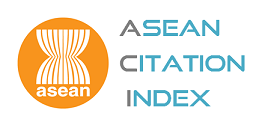The Commodification of Culture: Bhutan’s Tourism in Globalisation Context
Keywords:
Bhutan, Commodity, Culture, Globalisation, Social ChangeAbstract
The Bhutanese culture is one of the most important cultures of the world and has a unique identity. The richness of culture and nature have made Bhutan become a major destination for tourism. The Bhutanese government's clear promotion and development strategy have resulted in fast-growing tourism, especially cultural tourism linked to Buddhism. This paper looks at the relationship between tourism and the commodification of culture in the context of globalisation. This article uses qualitative research methodology to study and analyse the effects of globalization through tourism on the culture of Bhutan. This article analyses the primary information, such as Bhutanese official documents, etc. , and secondary information such as textbooks, articles, online news, etc. through the theory of commodification of culture. When the Bhutanese culture becomes a commodity, the culture serves the society more than the traditional ways of life that people practise. Tourism is an important factor that increases the process of social change in Bhutan. It does not impact the country only in terms of economics but it also impacts the culture and society in Bhutan, while the globalisation process is one of the major factors that links the commodification of Bhutanese culture with tourism. The argument of the article is that the Driglam Namzha policy is a major policy in shaping Bhutan’s contemporary image to the world, although this policy has also created social change, such as a unique culture in Bhutan. At the same time, the growth of tourism as a result of globalisation is eroding this policy, especially among younger generations who interact with foreign travellers. This situation has changed Bhutanese culture significantly.
Downloads
Published
How to Cite
Issue
Section
License
The opinions and ideas expressed in all submissions published in Thammasat Review are solely that of the author(s) and do not necessarily reflect that of the editors or the editorial board.
The copyright of all articles including all written content and illustrations belong to Thammasat Review. Any individuals or organisation wishing to publish, reproduce and distribute a particular manuscript must seek permission from the journal first.








